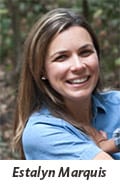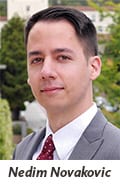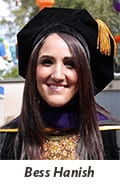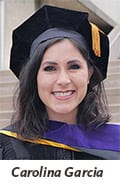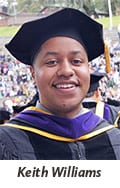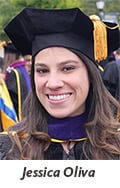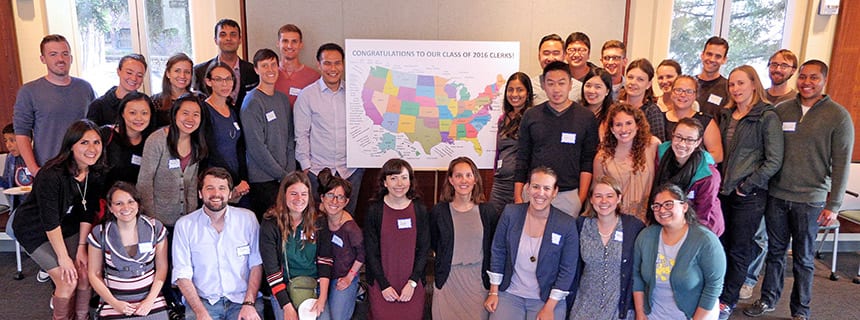
By Rachel DeLetto
This year’s graduating class has earned one of the highest numbers of clerkship placements in Berkeley Law’s history. But what is more notable than numbers is the potential impact this diverse group of graduates may have on some of the country’s most influential jurists.
In sum, 59 members of the Class of 2016 have been selected for 70 judicial clerkships, working for judges at 38 courts in nearly two-dozen states. More than half will begin their careers in chambers immediately after graduation, while others will clerk in later years. Eleven graduates landed multiple placements, and fifteen will clerk in the influential and coveted U.S. Court of Appeals for the Ninth Circuit.
“It’s an incredible group: different academic profiles, different levels of experience, different cultural and educational backgrounds, different career goals—people who want to go into private sector as well as public interest and government,” said Eric Stern, who administers the school’s clerkship program for the Career Development Office (CDO).
Although each graduate offers a distinct personal and professional profile, as a group they share some recurring traits: grit, determination, resilience, and a robust support network within the Berkeley Law community.
Meet the clerks
Demystifying an Intimidating Process
“Clerking for a judge is an excellent transition from law student to lawyer,” Stern said. “Clerks gain a unique perspective on how judges make decisions and respond to different methods of advocacy.” Along the way, they receive rigorous training in legal analysis, research, and writing—and develop relationships that last throughout their careers.
Clerkships are among the most coveted jobs for newly minted lawyers, and the application process has become increasingly competitive in recent years.
“When I applied for clerkships, the system was more manageable—you didn’t have to begin the application process until after your 2L year,” Tony LoPresti ’12 said last year after clerking for two U.S. Court of Appeals judges. “Now, there’s this unstructured race out of your 1L year to apply, and the process is intensive and opaque. It takes an incredible amount of time to do it right.”
With mentoring help from alums like LoPresti and support from the CDO and faculty, Berkeley Law students are well equipped to clear these hurdles.
“There’s this idea that there is a barrier between the students and the judges,” Stern said. “But our team works hard to overcome that perception.” From the first term of their first year, students have the opportunity to interact with judges through various CDO events, the Judge-in-Residence Program, and student-led events such as the panel with former clerks of U.S. Supreme Court Justice Antonin Scalia.
The law school’s judicial externships also offer students an opportunity to work part- or full-time for local, state or federal judges in the Bay Area.
Altogether, these resources raise awareness—and excitement—about clerking, Stern said. “The conversations that students have with judges give them the confidence they need to thrive in the clerkship application process.”
Clerkship Support Network
Professors Amanda Tyler and Andrew Bradt, co-chairs of the faculty Clerkship Committee, help guide students along the application path, while faculty assistants process thousands of recommendation letters year-round. The CDO also enlists Berkeley Law’s alumni network to advise clerkship applicants.
“Current and former alumni clerks play an invaluable role in not only alerting us to openings for their judges, but also coaching and mentoring applicants, while making connections for current students interested in clerking through their own networks,” Stern said.
Behind every clerkship is a story of “the unwavering faith your advocates had in your ability to succeed in this daunting process and excel as a clerk,” said Dean Melissa Murray. She would know, having clerked for U.S. Supreme Court Justice Sonia Sotomayor on the U.S. Court of Appeals for the Second Circuit, and for Judge Stefan Underhill of the U.S. District Court for the District of Connecticut.
“As law clerks, our graduates will be helping to shape the law, ensure access to justice, and build the skills and expertise needed to change the world as lawyers, business leaders, entrepreneurs, and social justice pioneers,” Murray said. “I know that they will represent Berkeley Law exceedingly well in judicial chambers across the country.”
The Class of 2016 clerks will join 45 alumni who begin their own clerkships this year, including Easha Anand ’14, who’s currently clerking for Supreme Court Justice Sonia Sotomayor. Seventeen graduates of prior classes will begin clerkships in 2017, including Karim Kentfield ’12, who will clerk for Supreme Court Justice Ruth Bader Ginsburg.
We couldn’t profile all of our new clerks here, so we chose a handful that represent the range of judicial placements. Here are their stories.
